
In this Nature video, watch a battle between a loggerhead turtle and a shark.
- Subject:
- Life Science
- Science
- Material Type:
- Lecture
- Provider:
- PBS LearningMedia
- Author:
- Canon
- Corporation for Public Broadcasting
- SC Johnson
- WNET
- Date Added:
- 11/13/2008

In this Nature video, watch a battle between a loggerhead turtle and a shark.

In this video segment from Nature, see the value that sharks can have on the tourism industry in an area.

This article, written for students in grades 4-5, introduces the concept of albedo and describes the shrinking of Arctic sea ice. Modified versions are available for students in younger grades.

In this video excerpt from NOVA, learn about the advantages, disadvantages, and ethical implications of screening for genes associated with diseases, including those linked to breast and ovarian cancers.

Background image of normal disc-shaped red blood cells from the University of Utah. Inset shows sickled red blood cells, curved and rigid, from the Virginia Medical College.
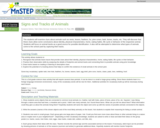
Students will examine clues about animals such as nests, leaves, feathers, fur, tracks that allow some conclusions about the identity, physical characteristics or behavior of the animals. Students will study the characteristics of animal tracks.
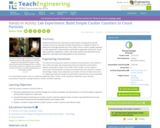
Students build and use a very basic Coulter electric sensing zone particle counter to count an unknown number of particles in a sample of "paint" to determine if enough particles per ml of "paint" exist to meet a quality standard. In a lab experiment, student teams each build an apparatus and circuit, set up data acquisition equipment, make a salt-soap solution, test liquid flow in the apparatus, take data, and make graphs to count particles.

An interactive lecture that uses flash animations showing the researcher and their experiments that were used to develop the basic concepts in Mendelian genetics. Includes multiple choice questions students can answer in class.
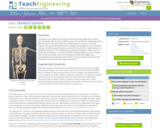
Through this unit, written for an honors anatomy and physiology class, students become familiar with the human skeletal system and answer the Challenge Question: When you get home from school, your mother grabs you, and you race to the hospital. Your grandmother fell and was rushed to the emergency room. The doctor tells your family your grandmother has a fractured hip, and she is referring her to an orthopedic specialist. The orthopedic doctor decides to perform a DEXA scan. The result show her BMD is -3.3. What would be a probable diagnosis to her condition? What are some possible causes of her condition? Should her daughter and granddaughter be worried about this condition, and if so, what are measures they could take to prevent this from happening to them?
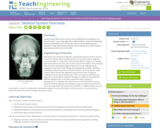
Students will learn about bone structure, bone development and growth, and bone functions. Later, students will apply this understanding to answer the Challenge Question presented in the "Fix the Hip" lesson and use the acquired learning to construct an informative brochure about osteoporosis and biomedical engineering contributions to this field.

This web-based graphing activity explores the similarities and differences between Velocity vs. Time and Position vs. Time graphs. It interactively accepts user inputs in creating "prediction graphs", then provides real-time animations of the process being analyzed. Learners will annotate graphs to explain changes in motion, respond to question sets, and analyze why the two types of graphs appear as they do. It is appropriate for secondary physical science courses, and may also be used for remediation in preparatory high school physics courses. This item is part of the Concord Consortium, a nonprofit research and development organization dedicated to transforming education through technology. Users must register to access full functionality of all the tools available with SmartGraphs.

In this lesson designed to enhance literacy skills, students learn how animals' physical characteristics, such as jaw structure, are directly related to the function they perform when the animal interacts with its environment.

This video segment adapted from NOVA/FRONTLINE looks at American energy consumption and the resulting production of greenhouse gases.

This article describes the energy that radiates from the sun, the concept of albedo, Earth's radiation budget, and the effect of decreasing albedo on Earth's climate.

In this lesson designed to enhance literacy skills, students study a disease outbreak and the investigation that followed to understand the role that public health workers play in protecting the communities they serve.
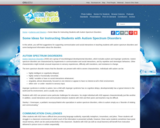
This article includes ideas for effectively teaching students with autism spectrum disorders, including the visual presentation of information and teaching social skills.
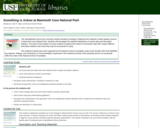
Spreadsheets Across the Curriculum/Geology of National Parks module. Students use the geometric mean and multiplicative standard deviation to examine the right-skewed distribution of nutrient concentrations in water-quality data at Mammoth Cave National Park.

This activity will expose students to the local fish in their lakes. The students will be asked to identify, sort, and classify local fish.

In this video adapted from the University of Alaska, Anchorage, Alaska Native people of Chevak teach visitors about the beauty of Cup'ik culture and the spirit of the earth, sea, and animals.

Splash takes his pals to go see his friend, Lu, a fearless explorer in the deep. He has met Lu in his travels, and she has been an inspiration for Splash. Lu turns out to be a female football fish (the "Lu" stands for "bio-LU-minescent") who leads them on an adventure in the abyss. [12:26]